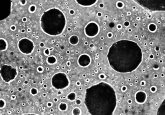Urine-based HPV test a potential alternative for cervical cancer screening

A new study has concluded that human papillomavirus, the leading cause of cervical cancer, can be effectively screened for with a simple urine test, offering a non-invasive alternative test for women.
Papanicolaou (Pap) testing has, according to the American Cancer Society, been responsible for an approximate 70% decrease in death rates due to cervical cancer between 1955 and 1992. Despite this, screening uptake in recent years has been low, possibly due to the invasive nature of the test, which requires a medical professional to scrape cells from the patient’s cervical opening.
Women between the ages of 21 and 65 should, based on recommendations from the US Preventative Services Task Force, attend a Pap test every 3 years, and yet the percentage of women who follow this advice is below targets. It is of particular concern in the UK, where screening rates have dipped below 80% in recent years.
In a recent study published in The BMJ, researchers have analyzed the results of 14 studies that looked both at traditional Pap smears and urine-based human papillomavirus (HPV) tests, in order to determine if a urine test can be accepted as a suitable screening alternative for the virus.
The team behind the work, including Neha Pathak of the Women’s Health Research Unit at the Blizard Institute of Barts and the London School of Medicine and Dentistry (London, UK), found that, on average, 87% of positive results were correctly identified by urine HPV testing, while 94% of negative results were correctly identified, when compared with cervical sample testing.
When testing for HPV types 16 and 18, the strains primarily responsible for cervical cancer, 73% of positive and 98% of negative results were correctly identified by urine HPV testing.
The researchers explained that their findings demonstrate the accuracy of urine HPV testing and that the test should be a clinically acceptable alternative to Pap smears, in order to increase testing for the virus amongst women considered hard to reach. However, they counsel caution and advise that further studies are necessary.
Critically, the researchers explain that “false negative results would lead to missing cases of precancerous or cancerous lesions and false positive results would lead to over-investigation and anxiety.” The researchers propose a cautious approach, with future investigators encouraged to do everything possible to prevent loss of trust in HPV testing.
In a related Editorial, Harry C Kitchener and Gemma L Owens of the University of Manchester (Manchester, UK) suggested that in the future, self-sampling could be an option for women unable or unwilling to attend regular screening appointments. They describe how “in lower income countries that lack infrastructure, self-sampling might even be beneficial and cost effective for all women who are eligible for screening.”
Source: Pathak N, Dodds J, Zamora J, Khan K. Accuracy of urinary human papillomavirus testing for presence of cervical HPV: systematic review and meta-analysis. The BMJ doi: http://dx.doi.org/10.1136/bmj.g5264 (2014) (Epub ahead of print); Kitchener HC, Owens GL. Urine testing for HPV. The BMJ doi: http://dx.doi.org/10.1136/bmj.g5542 (2014) (Epub ahead of print).




